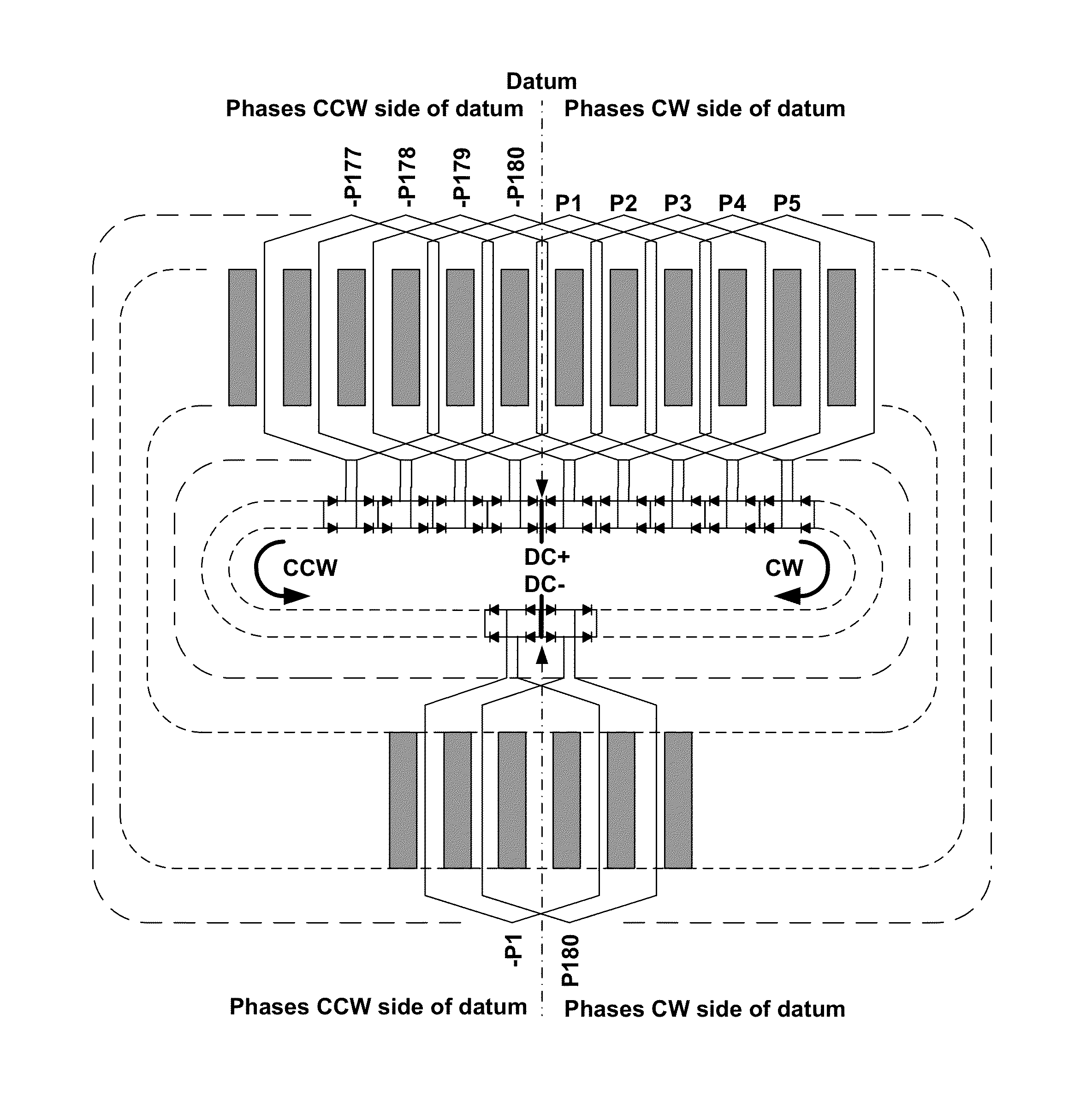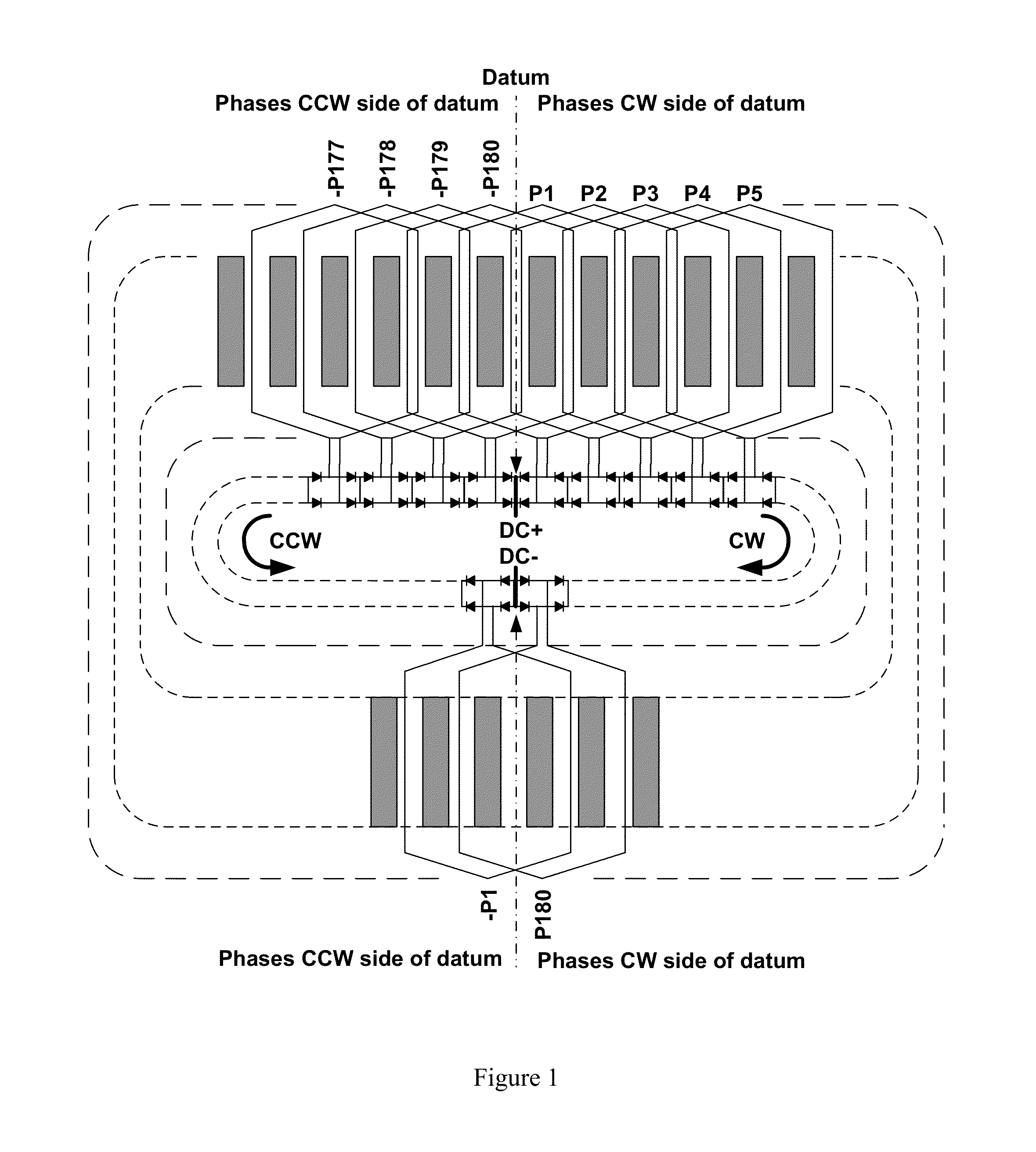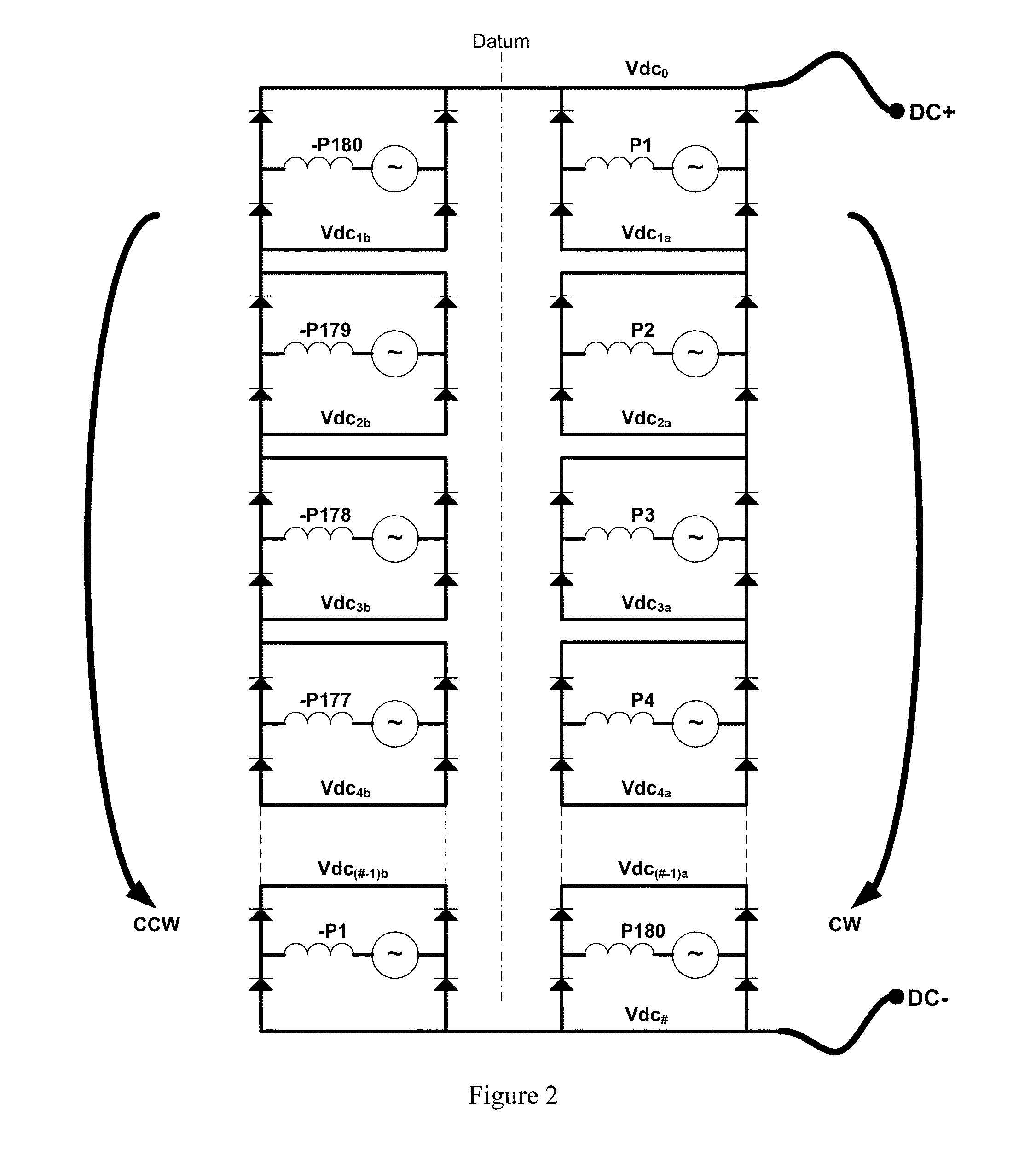DC electrical machines
a dc electrical machine and electrical motor technology, applied in the direction of electronic commutators, wind energy generation, dynamo-electric machines, etc., can solve the problems of dc electrical machine torque density limited practical performance, dc electrical machine brush commutation process complicated and complicated, and dc electrical machine arcing mode is typically destructive, so as to reduce the thermal resistance of the main wall, minimize the requirement of inter-coil insulation, and low loss operation
- Summary
- Abstract
- Description
- Claims
- Application Information
AI Technical Summary
Benefits of technology
Problems solved by technology
Method used
Image
Examples
Embodiment Construction
[0067]A dc electrical machine according to an embodiment of the present invention is shown schematically in FIGS. 1, 2, and 3. A dc electrical machine according to an embodiment of the present invention is shown schematically in FIGS. 4, 5, and 6. It will be readily appreciated that the rotor and much of the stator have been omitted from FIGS. 1 and 4 for clarity.
[0068]In embodiments, the stator (or armature) assembly of the electrical machine has 360 winding slots (Ns=360) for receiving the coils of the stator winding. In an embodiment, the stator winding includes 360 two-layer coils. In an embodiment, the stator winding includes 180 single-layer coils. Although not shown, the stator could have an odd number of winding slots or a tooth concentrated winding where each coil is wound around a stator tooth.
[0069]According to an embodiment, a datum is provided by the co-located local positive dc terminals Vdco of first and second segments (corresponding to first and second dc circuits) ...
PUM
 Login to View More
Login to View More Abstract
Description
Claims
Application Information
 Login to View More
Login to View More - R&D
- Intellectual Property
- Life Sciences
- Materials
- Tech Scout
- Unparalleled Data Quality
- Higher Quality Content
- 60% Fewer Hallucinations
Browse by: Latest US Patents, China's latest patents, Technical Efficacy Thesaurus, Application Domain, Technology Topic, Popular Technical Reports.
© 2025 PatSnap. All rights reserved.Legal|Privacy policy|Modern Slavery Act Transparency Statement|Sitemap|About US| Contact US: help@patsnap.com



